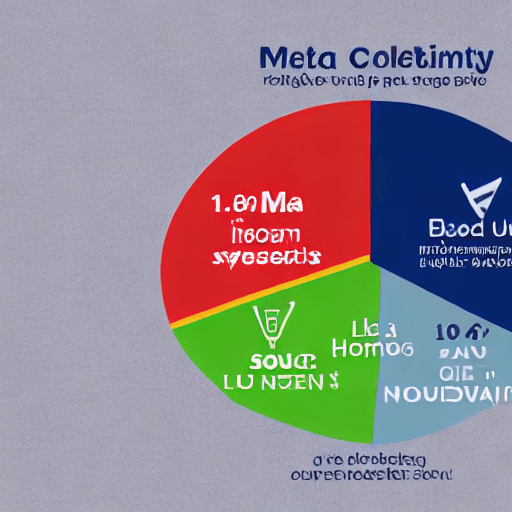

Meta Ads, encompassing Facebook and Instagram advertising, represent a powerful tool for businesses of all sizes. However, simply launching an ad campaign and hoping for the best rarely yields optimal results. A critical component of success lies in effectively managing your campaign budget. This guide provides a detailed exploration of how to strategically utilize your Meta Ad campaign budget, maximizing your return on investment (ROI) and achieving your marketing goals. We’ll delve into various budget allocation techniques, bidding strategies, and optimization methods, providing you with the knowledge to control your spending and drive tangible results.
Before diving into specific strategies, it’s crucial to understand the fundamental principles of Meta Ad budgeting. Unlike traditional advertising where you often have a fixed budget for a campaign, Meta Ads operate on a cost-per-click (CPC) or cost-per-impression (CPM) model. This means you pay only when someone interacts with your ad – whether it’s a click or a view. However, this flexibility comes with the responsibility of managing your spending effectively.
Meta Ads offer several budgeting options:
Choosing the right budgeting option depends on your campaign goals and the nature of your advertising. For example, if you’re running a brand awareness campaign, a daily budget might be suitable. If you’re running a lead generation campaign, CBO could be a more effective choice.
Effective budget allocation is the cornerstone of successful Meta Ad campaigns. Here are several strategies to consider:
This rule suggests allocating 80% of your budget to your best-performing ad sets and 20% to testing new ideas. Let’s say you launch three ad sets targeting different demographics. After a week, one ad set is generating a significantly higher click-through rate (CTR) and conversion rate. Allocate 80% of your budget to that ad set, allowing it to continue dominating your results. The remaining 20% can be used to experiment with new targeting options, creative variations, or bidding strategies.
This technique, popularized by Brian Dean of Backlinko, involves identifying content that’s already ranking well in search results for your target keywords. Then, you create content that’s significantly better – more comprehensive, more engaging, and more visually appealing. Allocate a substantial portion of your budget to promoting this superior content through Meta Ads. This approach leverages existing demand and positions your brand as a valuable resource.
Don’t be afraid to experiment! Allocate a portion of your budget (around 10-20%) to testing different ad sets, targeting options, and creative variations. Track the performance of each variation closely and shift your budget towards the most successful ones. This iterative approach allows you to continuously refine your campaign and maximize your ROI.
This strategy involves dividing your budget into tiers based on performance. For example, you might allocate 40% to your top-performing ad sets, 30% to ad sets showing moderate performance, and 30% to new or underperforming ad sets for further testing. This provides a balance between leveraging proven strategies and exploring new opportunities.
Your bidding strategy significantly impacts your budget utilization. Meta offers several bidding options:
With manual bidding, you set the maximum amount you’re willing to pay for each click or impression. This gives you complete control over your spending, but it requires constant monitoring and adjustments. It’s best suited for experienced advertisers who understand their target audience and competition well.
Meta’s automated bidding strategies can optimize your campaigns for specific goals, such as conversions, link clicks, or website traffic. Here are some popular automated strategies:
While automated bidding can be effective, it’s crucial to monitor its performance closely and make adjustments as needed. Don’t blindly trust the algorithm – use your insights to guide its behavior.
Budgeting is only part of the equation. Continuous optimization is essential for maximizing your ROI. Here are some key optimization techniques:
Constantly test different elements of your ads, including headlines, descriptions, images, and calls to action. Even small changes can have a significant impact on your results. Use Meta’s A/B testing feature to run multiple variations simultaneously and identify the most effective combinations.
Regularly analyze your audience data and refine your targeting options. Exclude audiences that aren’t performing well and expand your targeting to reach new potential customers. Use Meta’s detailed targeting options to reach specific demographics, interests, and behaviors.
Meta Ads can be displayed across various placements, including Facebook News Feed, Instagram Feed, Stories, and Audience Network. Analyze your placement data and shift your budget towards the placements that are generating the best results. For example, if your ads are performing well on Instagram Stories, you might increase your budget for that placement.
Ensure your Meta Pixel is properly installed on your website. This allows you to track conversions (e.g., purchases, leads, sign-ups) and optimize your campaigns for maximum ROI. Use Meta’s conversion tracking features to measure the effectiveness of your ads and identify areas for improvement.
Utilizing Meta Ad campaign budget strategies effectively is a critical component of any successful advertising campaign. By understanding the various budgeting options, bidding strategies, and optimization techniques outlined in this guide, you can take control of your spending, maximize your ROI, and achieve your marketing goals. Remember that Meta Ad campaigns are dynamic – continuous monitoring, testing, and optimization are essential for long-term success. Don’t be afraid to experiment, learn from your mistakes, and adapt your strategies as needed.
By following these guidelines, you can transform your Meta Ad campaigns from a cost center into a powerful revenue-generating engine.
**Disclaimer:** *This guide provides general information and recommendations. Specific results may vary depending on your industry, target audience, and campaign setup.*
**Resources:**
**Thank you for reading!**
Tags: Meta Ads, Facebook Ads, Instagram Ads, Campaign Budget, Budget Allocation, Bidding Strategies, ROI, Optimization, Meta Business Manager
[…] comprehensive guide provides a solid foundation for understanding and utilizing Meta Ads reporting effectively. Good […]